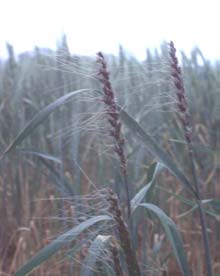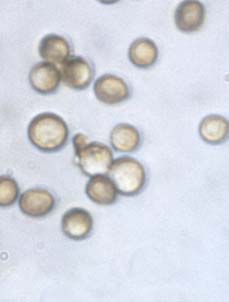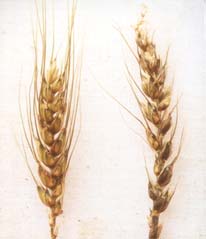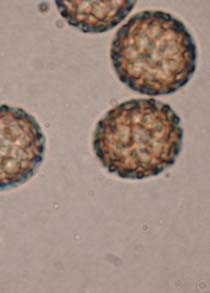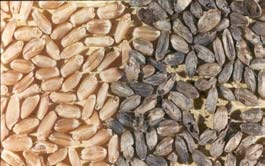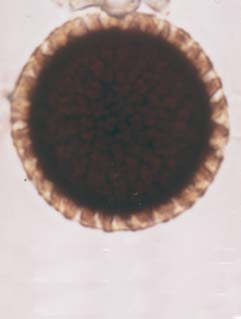loose smut common bunt of wheat and karnal bunt of wheat
The bunts and smuts are caused by fungi that affect the seed of wheat and other small grains and grasses. Only loose smut (Fig. 1) and common bunt (Fig. 2 - also called stinking smut) occur in Oklahoma. However, Karnal bunt (Fig. 3 - also called partial bunt), which does not occur in Oklahoma, is a concern because grain that tests positive for Karnal bunt can not move freely into international markets.
Loose Smut
Figure 1. Loose Smut of Wheat and 1000x view.
Loose Smut Key Points
- Grain and head replaced with loose mass of black spores.
- No smell to spores.
- Spores from smutted heads infect developing seed in healthy heads. Planting infected seed the next fall results in plants that produce loose smutted heads the next spring.
Common Bunt
Figure 3. Healthy and Common Bunted Wheat
Common Bunt Key Points
- Grain contents replaced with a dark mass of spores, but seed coat is intact.
- Spores have a rotting fishy smell.
- Spores from bunted heads survive in the soil or are carried on infested seed. These spores infect seedlings in the fall resulting in bunted heads the next spring.
Figure 4. Healthy Grain and common bunted kernels
Control
Loose smut and common bunt can be controlled with seed treatments (refer to OSU Extension Agents' Handbook, OCES Pub. No. E-832). An additional practice that may help control common bunt is to plant wheat early when soils are warm (>25 C or >77 F) because infection by common bunt is favored in cool soils.
Karnal Bunt
Figure 5. Karnal Bunt 1000x view
Karnal Bunt Key Points
- Grain is filled with a dark mass of spores, but seed coat is intact and infection usually is at one end of the seed.
- Spores have a rotting, fishy smell.
- Karnal bunt spores survive in soil or are carried on seed. Infection occurs when wheat flowers, resulting in partially or fully bunted grain.
Control
Control of Karnal bunt is difficult because infection occurs when wheat is flowering. Hence, seed treatments will reduce the number of spores on the seed coat, but spores in the soil may still be present at flowering when infection occurs. Karnal bunt spores can survive in soil for at least 3-5 years. Hence, rotation to non-hosts may reduce spores in the soil, but will not result in complete control in a 1-3 year period. Resistance to Karnal bunt has been reported, but the reactions of varieties adapted to Oklahoma are not known because research involving Karnal bunt can not be conducted in most areas of the United States.

